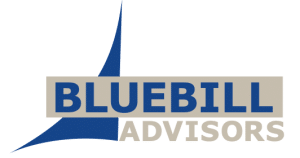This is the title of the presentation I was asked to give at the Kites Symposium of Multilingual Communication and Content Management in Finland this week. The main point I will be making is that multilingual content will only become easily and widely available when multilingual technology is deeply integrated in information technologies. I doubt that this will be considered controversial by anyone, but both the market demand and the technology has reached a point where companies are looking for slow steady growth to be accelerated. Although this demand is naturally higher in Europe, the potential for reaching new, or deeper into existing, markets ensure that even small to mid-size U.S. companies will be looking to incorporate multilingual technologies as soon as the cost and ease of doing so allows for it (abstract appended below). For more on how companies are thinking about this, see the recent report by our Content Globalization practice Multilingual Communications as a Business Imperative: Why Organizations Need to Optimize the Global Content Value Chain.
As Leonor says, machine translation, which has been around for years, is going to play a large role in multilingual applications in spite of its limited capabilities. For example, you may have noticed the Google translate feature at the top of this page and a couple of our other blogs. This was free, took no more than 5 minutes to install, and is very useful – try it out.
Here is the abstract for my presentation:
Language technologies are becoming integral to content and information technologies. This is a slow process, but inevitable. There is no question of the requirement for multilingual functionality. Those who might have thought or hoped that we would be a monolingual world in the foreseeable future must re-adjust their view when looking at the behavior (good and bad) across the globe today. Even in the U.S., where most of the population has always had a narrow view of language, organizations are awakening to the need for multilingual capability. This awakening is sure to continue because of global commercial opportunities. And because of the inexpensive global access provided by the Web, multilingual requirements are increasingly important for even very small businesses. Meeting the full market demand for multilingual requirements at the scale necessary won’t be possible without multilingual technologies becoming an integral component of mainstream information technologies.
While language technologies are not new and processes for managing translation and localization are well established, there is still much to learn about how to integrate language and other information technologies. First, the number of organizations, and people within organizations, with deep experience in translation processes and technologies is still relatively small. Second, there is fragmentation in the supplier market, within customer organizations, and along the “Global Content Value Chain”, that together contribute to slower growth. Third, development of all information technologies continues to accelerate, challenging even forward thinking organizations with large IT budgets.
Because of the central importance of multilingualism, all organizations need to understand as much as possible, what and how language technologies are being used today, how they are, or are not, integrated with other technologies and applications, and how and when emerging language and information technologies will affect commercial and information dissemination strategies.
The information technologies most immediately relevant to multilingual applications are content management technologies, including authoring, editing, publishing, search, and content management. Recent research on the use of language and content technologies by organizations with deep experience using both kinds of technologies, reveals that there is insufficient integration and interoperability across authoring, content management, localization/translation, and publishing. Much can be learned from analyzing how some organizations have successfully dealt with this constraint.
Language and semantic technologies continue to improve, both organically because of a renewed interest in their possibilities, and because of increases in readily available computing power. In addition to small expert niche companies, very large developer organizations such as Google and Microsoft are investing heavily in language technologies. Machine translation is one example, and one that is increasingly seen as having a serious role to play in many, if not all, translation applications. However, to fully achieve pervasive multilingual capability technology integration needs to progress from the integration of individual software applications, to the incorporation into large mainstream enterprise applications, widely deployed client tools, and software infrastructures.
Technology integration is not the only barrier to market growth. Yet, as more of these technologies are integrated, it will become easier to implement multilingual solutions, they will be less costly, easier to use, and procurement will be simplified.
